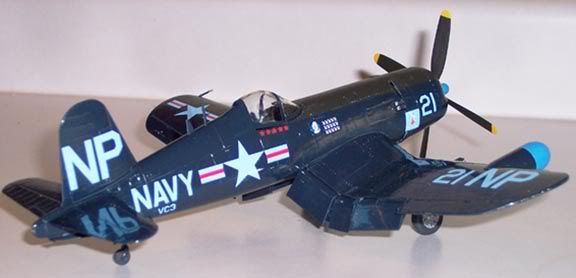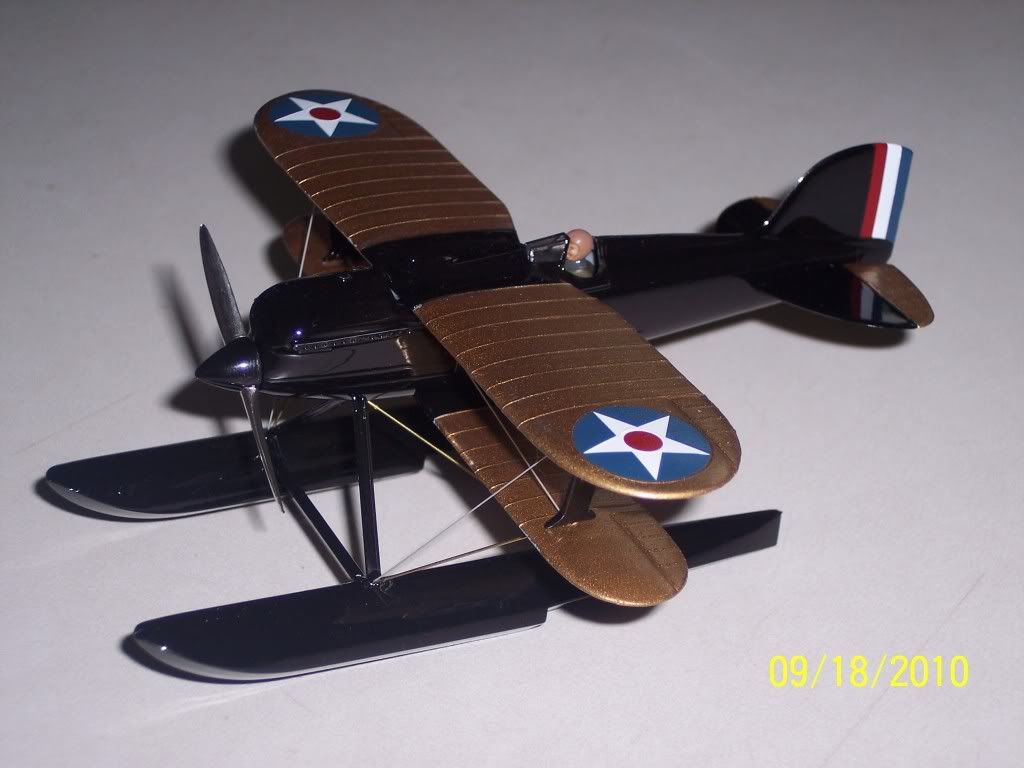Tim, you should have airbrushed and used acrylics and here's why...
Just kidding! I'm a big fan of hand painting. Lord knows whenever I paint, most of it ends up on my hands. But hand-brushing gloss paints is definitely tricky. As with any bit of advice when it comes to hobbies, I'll relay what happened/worked for me the last time I hand-brushed a model.
I painted my 1/48 Hasegawa F4U-5N with a glossy dark sea blue from Model Masters. As was mentioned in the other posts, I started off by thinning the enamel first. Tim, I wish I could give you a scientific formula or ratio of paint-to-thinner that I used but I didn't do anything like that. I just sort of eyeballed it and hoped for the best. I will say this, however. I might have added maybe ten drops of thinner but whatever the actual number was, I just added enough to BARELY be noticeable. My goal wasn't to thin the paint down to a watery airbrush consistency. But rather, it was only to oh-so-slightly reduce the "gooey-ness" of the syrup-like nature of the gloss paint.
I started at the nose of the plane and worked my way back using a good, soft 1/2" sable brush. I actually applied it just a wee bit on the thick side. My hope/goal was to keep the paint nice and wet and give it ample time to level off to a glass-like finish. Call it luck or skill.....it worked.
I would paint with broad strokes but when I could tell that the brush was just about ready for a refill, I would try my best to "stop" at a panel line or some other form of a good natural break. I reloaded the brush and continued the painting. Due to the wetness of the paint and the meeting of the paint at the panel lines, the paint was able to merge seamlessly.
Again, this was just me and my luck with it. I only hand-brushed this plane because it was one solid color front to back and top to bottom. It allowed me to do nice, straight constant brush strokes. I have an old FSM article where a guy did a phenomenal job of hand-brushing a camo pattern but I'm not that good enough to pull that off. I don't think I can offer any advice on how to do that. Sorry.
I hope this has been somewhat helpful.
Eric
PS. Tim, I went back and re-read your initial post and I just thought of something. Certain colors like gloss reds, whites and yellows are notoriously problematic to hand-brush. I've seen it described that when it comes to handbrushing those colors, in a sense you almost have to "float" the paint on so that it covers completely. That means you have to lay it on pretty thick and use the barest number of brush strokes you possibly can.
PPS. Here are a couple example of planes using the technique I mentioned above:

